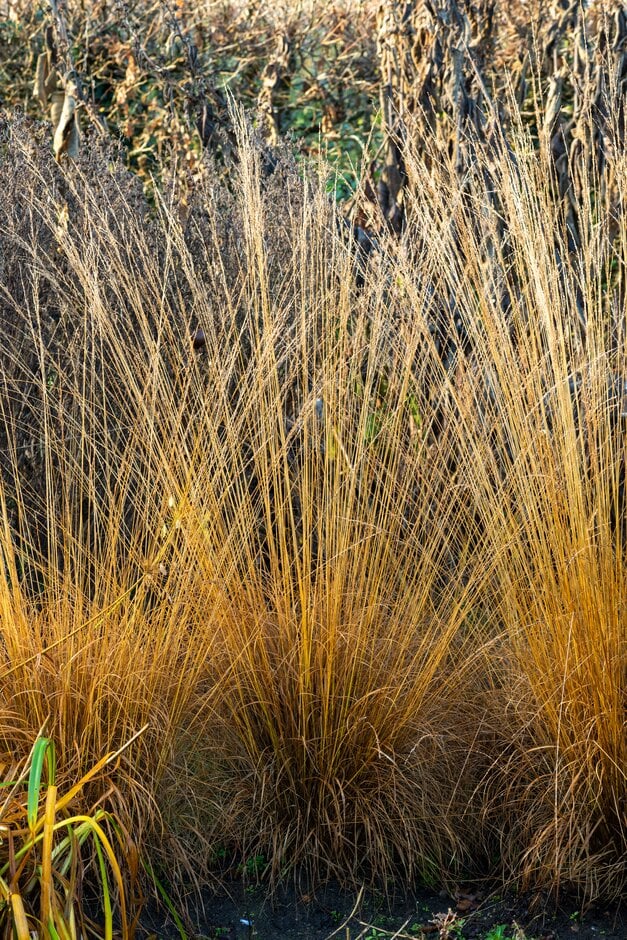Molinia caerulea subsp. caerulea 'Heidebraut'
purple moor-grass 'Heidebraut'
'Heidebraut' forms dense tussocks of narrow upright leaves, colouring in autumn. Slender plumes of densely-set dark purple spikelets are borne on deep purple-black arching stems, to around 1.2m tall. The stems turn colour as they age, becoming orange-yellow by late autumn
Size
Ultimate height
1–1.5 metresTime to ultimate height
2–5 yearsUltimate spread
0.1–0.5 metresGrowing conditions
Moisture
Moist but well–drained, Well–drainedpH
Acid, NeutralColour & scent
| Stem | Flower | Foliage | Fruit | |
| Spring | Green | |||
|---|---|---|---|---|
| Summer | Black Purple | Purple | Green | |
| Autumn | Yellow Black Purple | Purple | Yellow | |
| Winter |
Position
- Full sun
- Partial shade
Aspect
North–facing or South–facing or West–facing or East–facing
Exposure
Exposed or Sheltered Hardiness
H7Botanical details
- Family
- Poaceae
- Native to GB / Ireland
- No
- Foliage
- Deciduous
- Habit
- Bushy
- Genus
Molinia are deciduous perennial grasses, tufted in habit, with flat, linear leaves and erect stems bearing open flowering panicles in summer
- Name status
Accepted
How to grow
Cultivation
Will grow in any moderately fertile, moist but well-drained soil but prefers neutral to acid soils
Propagation
Propagate by division in spring and pot up until established
Suggested planting locations and garden types
- Coastal
- Cottage and informal garden
- Gravel garden
- Patio and container plants
- City and courtyard gardens
- Prairie planting
- Flower borders and beds
Pruning
Remove dead foliage and old flowered stems in spring
Pests
Generally pest-free
Diseases
Generally disease-free
Love gardening
Sign up to receive regular gardening tips, inspiration, offers and more
View our Privacy Policy
Get involved
The Royal Horticultural Society is the UK’s leading gardening charity. We aim to enrich everyone’s life through plants, and make the UK a greener and more beautiful place.
